No category in CPG is as appealing as chocolate. As the visual appeal interacts with our nostalgically inclined minds, our mouths salivate while our minds reflect on the “good times.” While these two purchase drives bring potential customers to the category, consumers base their final decision on the chocolate packaging design.
With over 5 billion dollars of cacao-based materials being imported every year into America, the chocolate category is more than a mass-market product; it’s in almost every household worldwide.
At this scale, a category becomes ultra-competitive, and we witness this reality in how new chocolate brands pop up daily. With market saturation comes a low barrier to entry. Couple this with the fact that it’s pretty hard to disappoint chocolate consumers. Your product packaging design is the best way to capture consumer attention and move them to brand consideration.
In this article, we guide you on how to create a chocolate packaging design. Here’s what you can expect to learn.
- The element that plays a role in influencing consumers and how they work together.
- Factors to consider before designing your chocolate packaging.
- Taking a psychological approach to your packaging design process.
- Recent trends and innovations in chocolate products.
- Best practices when collaborating to develop a chocolate package.
- Case studies to help you further understand what it takes to create a winning product.
After you finish this article, you will understand the steps necessary to create a packaged chocolate product.
Chocolate Packaging Design Elements
The visual elements of a chocolate product’s packaging design are crucial in capturing consumers’ attention. Let’s run through these as a quick reminder of each design element.
Colors and Themes: Colors and themes play a significant role in packaging design, as they can evoke certain emotions and associations with the product. Your colors and themes often reflect your brand personality and can differ vastly on your consumer audience. Consider the different colors and patterns between a Hershey bar and Tony’s Chocolonely.
Typography and Font: The choice of typography and font can influence how a consumer perceives a brand and contribute to the packaging design’s overall aesthetic appeal. While you can identify fonts that fit your brand theme, ensure they are legible and easy to read.
Shape and Size: The shape and size of a chocolate product’s packaging impact its shelf appeal and convenience. It can also convey a message about the product itself. An oversized chocolate bar might appeal to the wide-eyed child but won’t to the calorie-conscious consumer.
Texture and Material: Texture and material choices in packaging design add tactile interest, potentially enhancing the product’s perceived quality and value. Many brands choose to add outer packaging for this very reason. A chocolate box design has more room for variation than your chocolate wrapper.
Imagery and Graphics: Imagery and graphics can serve as visual cues to the product’s flavor, ingredients, and even its intended audience, making them a crucial element of packaging design. Natural chocolate bar packaging might illustrate a cacao bean in nature, whereas a culture-focused chocolate brand might lead with bright colors.
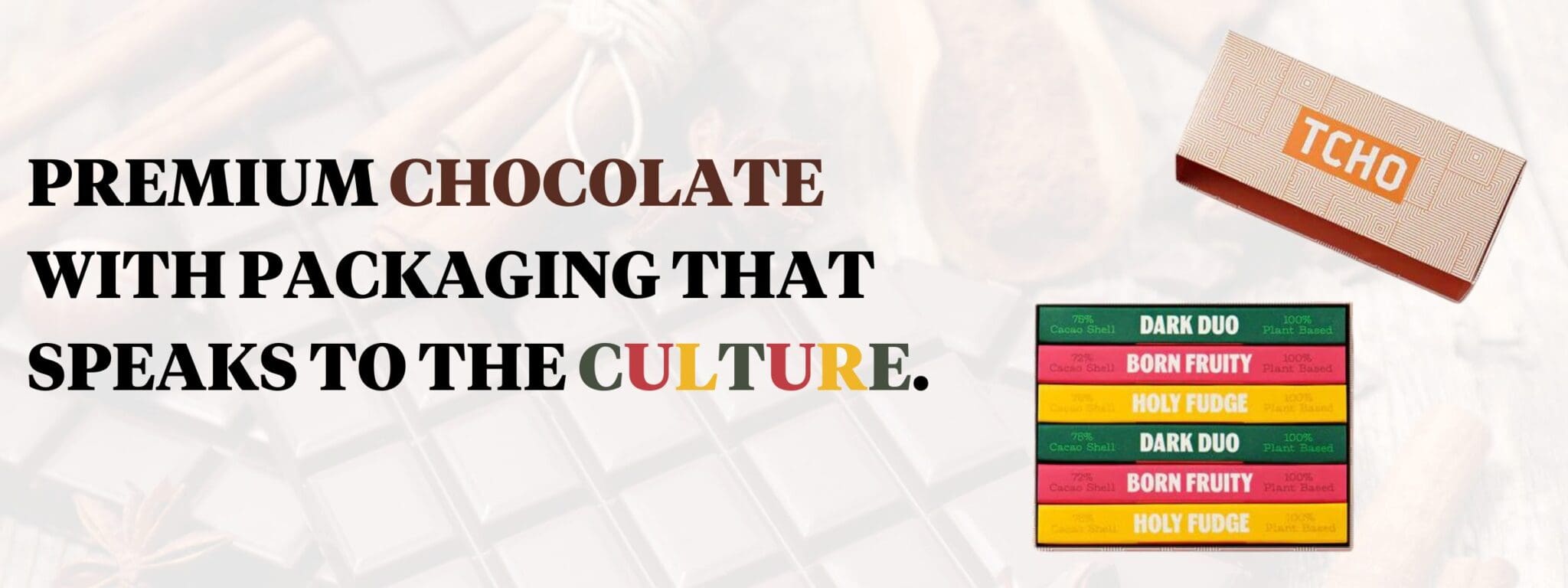
Factors to Consider in Chocolate Package Design
There are preliminary steps you must take in every CPG category, but strategy’s importance is even more critical in the chocolate category. As such, brands must consider each factor with their packaging design agency before shifting to creative.
Target Market and Demographics

Identifying your target audience as women in their early 30s might have worked for previous generations, but we live in a much more specialized world. Thousands of chocolate brands with seven figures or greater revenues are fighting for the broad target market example we just used.
A better target market would be a working mother in her early 30s who loves to entertain, pairing wine with chocolate with her friends. Even this might be too broad, but you get the point.
Branding and Identity

How do you want consumers to remember your brand? Are you an occasional product only consumed for specific reasons (i.e., See’s Candy) or a daily occurrence (i.e., caffeine-infused chocolate) where consumers build a habit? Brand identity differs in each approach, and you will want to be crystal clear about whom you want to be in the market before creating any chocolate bar branding.
Product Differentiation
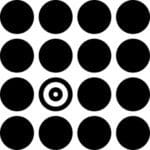
The first brand to infuse caffeine with chocolate engaged in true product differentiation. Unfortunately, attending the natural products expo confirms how this is no longer a point of differentiation. Ingredient-led points of differentiation are a good start, but brand positioning builds more trust and prevents competitor saturation. It will be harder for a brand to replace Cadbury as an Easter chocolate alternative than sustainably sourced cacao products.
Practicality and Convenience

Availability is a requirement for chocolate products. Brand switching in this category is an ongoing issue for many companies, and you cannot lean on DTC and a single retailer for the success of your product. You must take an omnichannel CPG approach if going into the chocolate category.
Eco-Friendliness and Sustainability

Although sustainability may not be a point of differentiation, it has become a category expectation. The only second to coffee is consumer awareness of the need to be eco-friendly in this CPG category. Threading sustainability into your brand story is standard practice for chocolate brands, so you must differentiate yourself by communicating your sustainable practices in a novel way.
The Psychology of Chocolate Packaging Design
Surface-level awareness will not get the job done in developing a loyal customer. Turning the consumer into a regular buyer of your product requires understanding how the packaging design influences consumer behavior. Here’s a look at three ways:
Color Psychology
We have some hesitations about this topic. But it is worth testing. Once you’ve determined your target customer, you can test how colors impact purchase intent.
Perception of Value
Distinctive packaging that communicates a greater value wins every time. Perceived value begins by identifying the words that raise your worth, followed by a design that mirrors the message.
Emotional Appeal
The public commonly uses the word inspiration in a hoorah way. But inspiration is the action within an emotion. Inspiration can come through sadness, joy, shock, and other emotions. Creating an emotional appeal on your package should 100% focus on moving the consumer’s hands to the package where they pick it up and take a deeper look.
Test to Confirm
Taking a consumer psychology approach requires package design testing. Otherwise, you are just floating ideas that sound in discussions but may miserably perform when showcasing your packaging design in a retail environment.
Chocolate Packaging Design Trends
With the growing awareness of antioxidants and health, previous generations saw a trend toward dark chocolate. Now, we are entering a world of chocolate personalization-based, influencing packaging presentations. Here’s a look at two of the market’s most prominent chocolate packaging design trends.
Minimalism and Storytelling
It seems odd that chocolate brands are sticking with the minimalist packaging design movement until you open the package. Now, brands are against the Willy Wonka gold foil focus and letting the cardboard box do the talking. Often about sustainability, chocolate brands write an article and then place it as inner packaging content.
Functional Ingredients
Caffeine isn’t the only ingredient touted as an improvement to the standard chocolate bar. We are finding functional ingredients such as matcha in the formulas. And it’s not a bad approach, but as we mentioned, ingredients are not a “sustainable” point of differentiation for this category. Sustainable is easily duplicatable by category emergers working with manufacturers with low minimums.
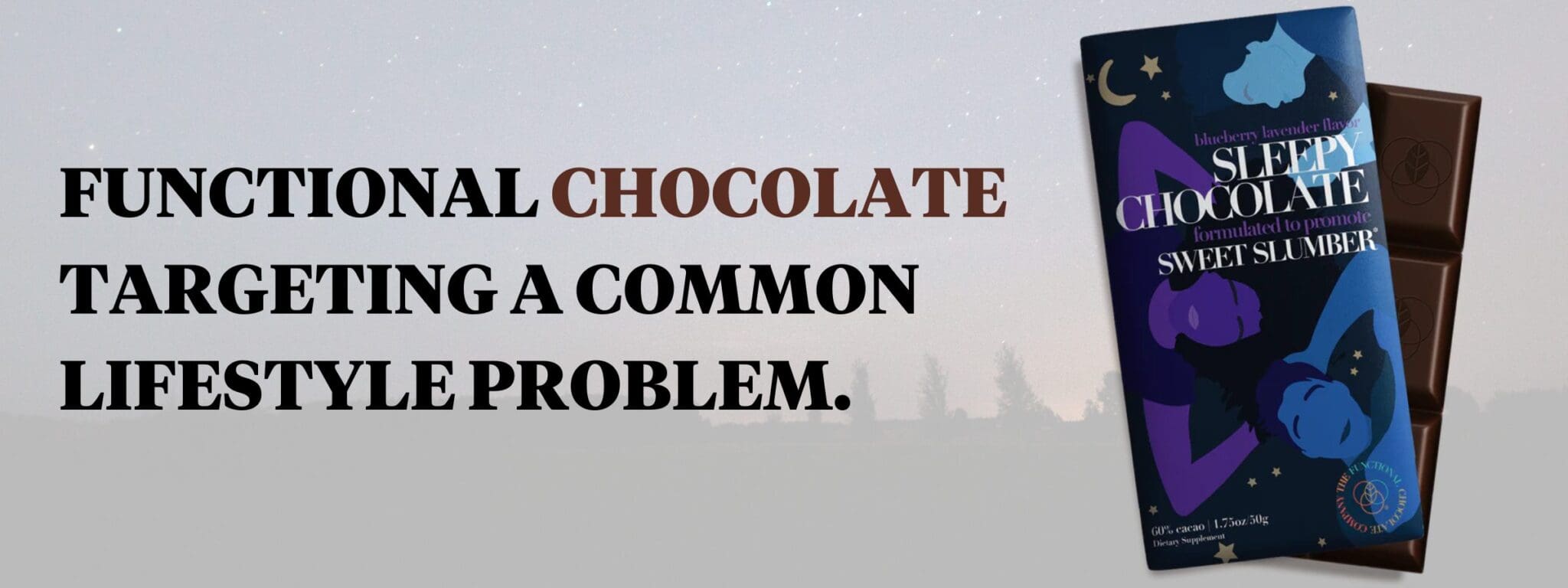
Chocolate Packaging Innovations
Innovations in packaging are happening across many categories, but chocolate is leading the way for many of these concepts.
Multi-Sensory Experience
We live in an integrated world where tactile touch taps into the consumer’s emotions, yet they grab their phone and snap the QR code for products with smart packaging. Bridging these two worlds together for a multisensory experience is the best way to reach consumers.
Personalization
We can’t forget the importance of nostalgia when creating a personal experience for the consumer. In past decades brands were restricted to a single print unless they were willing to pay out the wazoo for plate charges. Now, you not only can include the “golden ticket,” but you can print it right on the box. More chocolate brands need to play off the opportunity to personalize the experience.
Tertiary Packaging
The term “tertiary” is traditionally reserved for shipping pallets or large boxes of product, but in chocolate, it’s an additional way to stand out on the shelf. Having a packaging design for the box your chocolate bars come in will ensure proper slotting and allow you to widen your presentation.
Best Practices for Chocolate Packaging Design
SmashBrand has a packaging design process that every brand uses to ensure we maximize shelf performance and prevent silly mistakes. Here’s a look at some of the best practices we employ with our clients.
Conducting Market Research

Not only should you acquire existing market research, but you should also inquire about potential consumers to determine their interests, habits, tastes, and dislikes. The key is to use existing market research to define your target audience so you do not receive feedback from unlikely customer personas.
Collaborating with Design Professionals

There are designers, and then there are design professionals. The design professional is rarely the creative but someone with experience and understanding about what does and doesn’t work in a given category.
Experience The Consumer Journey

A package can present perfectly on a shelf but terribly in a kitchen or pantry. Packaging experience is pivotal to creating repeat purchases, and the only way to fully understand the consumer’s experience is to walk through it.
Testing and Refining the Design

We believe in a strategy, design, test, and iteration process. Test concepts against one another and then test those concepts against category leaders, iterating throughout the process.
Adapting to Evolving Consumer Preferences

Consumer Trends, interests, and lifestyles change over time, and brands must be aware of the adapt, migrate, or die philosophy. While certain aspects of your brand essence should stay true, others must be willing to change over time.
Case Studies of Successful Chocolate Packaging Designs
We can learn a lot (the good and the bad) lessons from brands within the chocolate industry. Here’s a look at several chocolate packaging ideas with strong market positioning.
Grounded In Product Differentiation
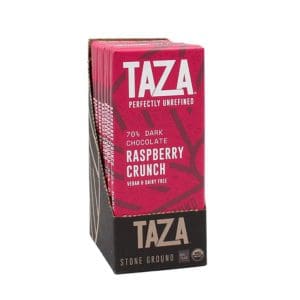
Taza Chocolate is a bean-to-bar chocolate company that differentiates itself through its unique stone-ground chocolate-making process, which gives the chocolate a gritty texture and bold flavor. By highlighting this process on its website, packaging, and marketing mediums, Taza has a loyal following of consumers who value its commitment to traditional chocolate production.
Creating An Omni-Experience
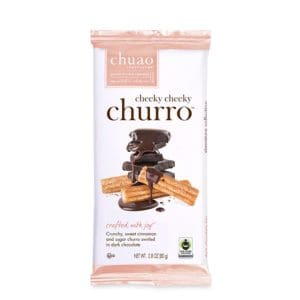
Chuao Chocolatier is a chocolate brand that focuses on creating a unique and memorable chocolate experience for its customers. They have differentiated themselves in the crowded chocolate market through their playful and whimsical packaging design, which matches their chocolate bars’ fun and inventive flavors.
The unique packaging, in-store experience, and online tasting events help Chuao Chocolatier create a unique chocolate experience. Bringing consumers into the company resonates with customers who value brand experience with their chocolate products.
chocolate box packaging design, chocolate wrapper design ideas, chocolate box packaging ideas, ideas for packaging chocolate, chocolate bar packaging design,
Data-Driven Brand Development For Chocolate Products
Want a best-selling brand? SmashBrand is a brand development agency for CPG brands who want to see a performance lift on shelf. From strategy to packaging design, we help brands improve their positioning and messaging for optimal retail performance.
Subscribe to
Nice Package.
A monthly newsletter that unpacks a critical topic in the FMCG & CPG industry.
Free Resource.

CPG product repositioning guide.
Explore the five undeniable signs your CPG product needs repositioning along with strategies for leveraging consumer insights for a guaranteed market lift.
Learn More About CPG product repositioning guide.